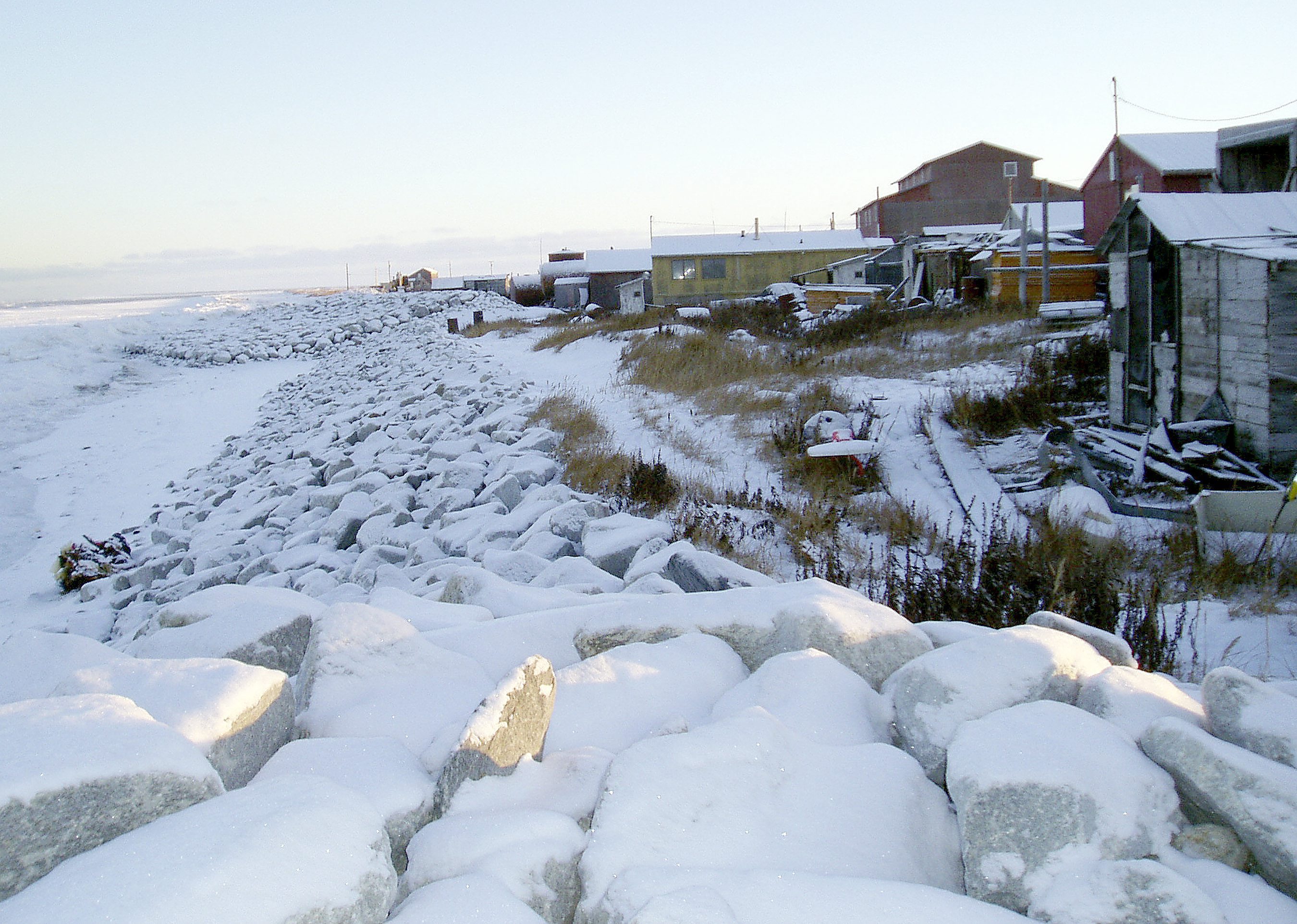Arctic Alaska community wants in on fishing program

An impoverished Northwest Alaska village is trying to elbow its way into a lucrative commercial fishing program that helps boost economic opportunity in much of rural Alaska.
Sixty-five other villages are already part of the Community Development Quota (CDQ), one of those Alaska-only legislative animals that made its creator, the late U.S. Sen. Ted Stevens, so beloved in the Far North.
The two-decade-old program sprinkles the riches of the Bering Sea fisheries upon remote communities, providing six regional nonprofit corporations with about a 10 percent set-aside share of the sea’s harvestable fish stocks, including the immensely valuable pollock.
In 2011 alone, the CDQ entities returned about $175 million to their communities and fisheries activities, they reported.
A question of location
But the Arctic village of Shishmaref isn’t so lucky. It’s about 15 miles shy of the program’s geographic limits, which specify that participating communities must reside within 50 nautical miles of the Bering Sea.
Shishmaref’s unfortunate location presents another issue. Built on a Chukchi Sea barrier island 600 miles northwest of Anchorage, the village faces imminent danger of washing away due to climate-induced erosion.
In recent years, leaders have been thinking about a relocation site. And that has some in the Inupiat village of 600 joking, but only halfway so, that they could kill two birds with one stone: Rebuild their village on a new site within the bounds of the CDQ program, said Tony Weyiouanna, president of the local village corporation.
That, of course, seems like an unlikely solution, in part because there’s no state or federal program to assist villages with moving.
So Weyiouanna, a savvy village promoter who helped make Shishmaref into an international, global-warming media darling, is taking the community’s case to Congress.
The usual trifecta of village power — the Native corporation, tribal government and city government — recently held a joint meeting to make their pitch. In unity, they passed a mid-April resolution calling on Congress to include Shishmaref in the CDQ program.
Now is the time to act, Weyiouana said, because the federal act the program falls under — the Magnuson-Stevens Fishery Conservation and Management Act of 2006 — is up for reauthorization.
The fact that Shishmaref never got a chance to join the CDQ program removed a potential stream of money, the resolution reads. The resolution didn’t mention the high rates of poverty in the village, but they’re worse than some of the 15 other communities in the Norton Sound Economic Development Corp. (NSEDC), the closest CDQ group to Shishmaref, Weyiouanna said.
If Shishmaref were lucky enough to become a member of the CDQ club, it would be the northernmost community in the program. That status now belongs to the village of Wales, 70 miles southwest of Shishmaref on the tip of the Bering Strait.
Getting Congress to change the law won’t be easy, though the CDQ program has expanded in the past.
Program started with 57 participating communities
The village of Akutan, along the Aleutian Chain, joined in 1995, three years after the original 57 participating villages were named, said Aggie Blandford, executive director for the Western Alaska Community Development Association (WACDA), an administrative body representing the CDQ groups.
Akutan had initially been excluded because it was home to commercial fish company Trident’s processing plant. Participating villages were not supposed to have sufficient groundfish processing capability, which explains why Unalaska is not part of the program. Akutan overcame that hurdle by showing it received little benefit from the Trident plant.
Eight other villages in Southwest Alaska were added in 2001, said Blandford. The state agreed it had mistakenly measured the distance from the Bering Sea in statute miles, instead of the longer nautical miles required by the law.
WACDA hasn’t taken a position on the resolution, Blandford said.
Neither has NSEDC, the Norton Sound CDQ, said Tyler Rhodes, the company’s communications director.
NSEDC offers some benefits to Shishmaref residents, even though the village is not part of the corporation. That includes help purchasing fuel, access to scholarships and job training initiatives, and donations for emergencies and funerals, Rhodes said.
The benefits aren’t enough, Weyiouanna said.
Villages in the CDQ program can use grants they receive to acquire additional grants from state or federal agencies. Shishmaref doesn’t have that money to match and acquire other grants, Weyiouanna said.
“We don’t really want to create any problems for the existing villages or anything … but we don’t have no tax base and no economic development,” he said.
Weyiouanna plans to arrange meetings with the Alaska delegation in the coming days.
“We need to try to do something,” he said.
Contact Alex DeMarban at alex(at)alaskadispatch.com



